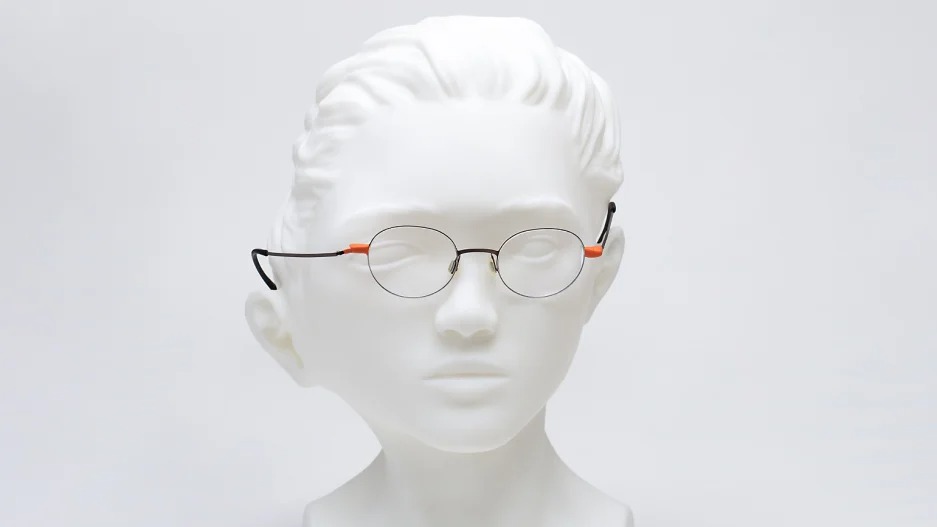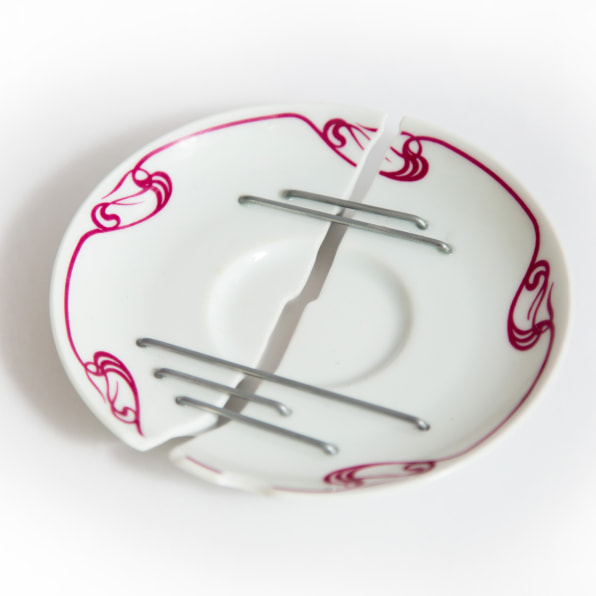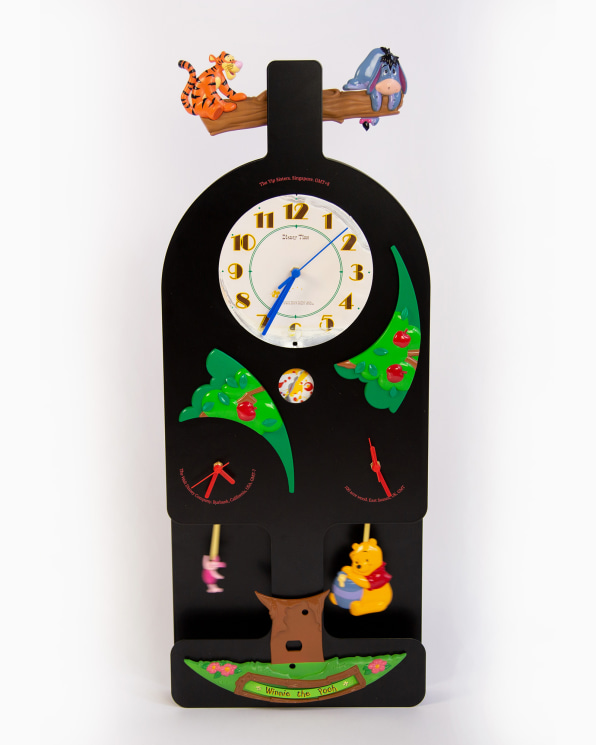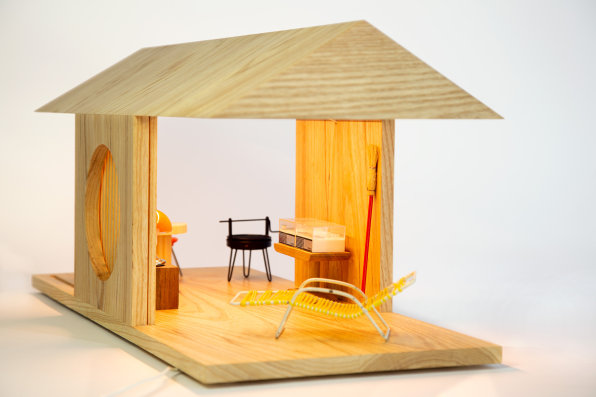- | 8:00 am
Here’s what it will take for designers to pivot from a throwaway to a repair culture
A new exhibit at the Victoria & Albert museum reveals what objects people choose to repair—and how they want them fixed.

Consumer culture in the 20th century has brought many wonders, but at the cost of an enormous amount of waste: We’ve asked companies to create cheap, convenient products, and they’ve complied. They pump out single-use plastic packaging, takeout containers, and grocery bags. Fashion labels make trendy clothes out of low-quality materials so we can chuck them out after a few wears. Furniture is now so affordable we can swap it out every season. This over-consumption and waste is accelerating climate change and pollution.
It doesn’t have to be this way and, in fact, for most of history, it wasn’t. People bought well-crafted products and kept them for decades, repairing them when they fell apart. “R for Repair,” a new exhibit at the London Design Festival presents real objects that people have kept and repaired. It offers a fascinating glimpse into what causes people to cherish items enough to preserve them and the creative ways designers approached the art of repair. It offers valuable insight to environmentally-conscious consumers who are embracing repair in an effort to live more sustainably.

This exhibit was originally commissioned by DesignSingapore Council and debuted at the National Design Center, in Singapore last year. It began with a call for people to submit broken objects along with a little explanation about why they wanted these objects repaired. The curators would select items, then give them to designers to repair them. “It was the stories that really drew us in,” says Jane Withers, who co-curated the exhibit with Singaporean designer Hans Tan. “People had a powerful attachment to these objects.”The exhibit offers an assortment of interesting objects from an old camera to shards of glass smashed during a Jewish wedding ceremony to toy puffins and doll houses. In an interesting twist, most of these objects weren’t that expensive to begin with. “Clearly, it wasn’t monetary value that kept people attached to these objects, but rather sentimental value,” Withers says.
One commonality among these objects is that they tended to be designed to be used repeatedly, for long periods of time. Take eyeglasses sent in by Minjeong Cha that she had worn for years. “I loved wearing them to read, write, or draw because they were very light and it did not feel like I was wearing them at all,” she wrote. “My girls, who are very curious about whatever I hold or wear, played with . . . and eventually broke them.”Another, Meiho, submitted a Bao Bao bag made by Japanese designer Issey Miyake in 2000. “It soon became my favorite bag of all time,” she writes.

A pair of sisters sent in a Winnie the Pooh clock that they had used it for 21 years as it progressively fell apart. “This clock was a housewarming gift from our dad’s Japanese friend when we were just 4 and 6 years old,” wrote Stacy Yip. “We cannot remember a time without this clock.” Withers points out that the repeated use of the object ensures that they are deeply woven into people’s lives. By repairing the object, they are effectively preserving their memories.While many designers–particularly those in fashion–are driven by temporary trends, one lesson from the exhibit is that people tend to cherish objects that they feel comfortable using for a long time. So, to design for longevity, designers must create objects that are classic and timeless, rather than subject to passing trends. Objects must also be functional, rather than purely decorative. The sisters were attached to the Winnie the Pooh clock because they looked at it to tell the time; it couldn’t just fade into the background as a tchotchke.
The objects were given to a range of designers to repair as they chose. Most weren’t interested in merely returning the item to its former state. Instead, they brought creativity and artistry into the process. With the Bao Bao bag, designer Elissa Brunato replaced some of polyvinyl pieces with stainless steel, giving the bag a disco ball effect. Designer Dean Brown took apart the components of the Winnie the Pooh clock and put them back together as a grandfather clock, incorporating the see-saw element of Winnie the Pooh and Piglet going back and forth.
The owners of these objects understood that by submitting their items to this project, they would be transformed by artists and designers, then exhibited. It is possible they will be unhappy about the outcome. “We don’t quite know what they owners will think, until they get their objects back,” Whithers says.

Nina Tolstrup and Jack Mama of the design firm Studiomama were tasked with repairing tiny furniture belonging to Charlotte Philipps. As a child in the late 1960s, her parents would give she and her sister new items of furniture for her doll’s house every Christmas. The doll’s house itself is long gone, but Philipps had carefully preserved the furniture. Tolstrup and Mama decided to first create a new doll’s house, one that would make it easy to see the furniture. They even created a sliding door in the house, something that Philipps had always wished for as a child. “Repairing is really about connecting to the meaning of the object,” says Tolstrup. “It’s about creating a way for those memories and feelings to live on, not necessarily recreating the object as it was.”
It took months for designers like Tolstrop and Mama to create his updated doll house. Whithers points out that this approach doesn’t necessarily work as a mass strategy that consumers and brands will want to adopt wholesale. Instead, the exhibit was meant to delve into the psychology of repair. It also helps challenge the notion that repair means simply returning an object back to its original state; repair can actually mean reinvention.
This exploration of repair is particularly meaningful now, as some consumers seek to buy objects that can be kept for a long time and repaired. Brands are responding by offering repair services. Fashion labels like Madewell, Uniqlo, and Arcteryx now offer quick repair services in-store; Pottery Barn offers advice about how customers can repair and refurbish their own furniture.
But the exhibit makes it clear that it’s important for makers to think about repair from the very start of the design process. They need to begin by making products that are highly functional, timeless, and made from durable materials, so the consumer can use them for a long time. This is very different from the current culture of making trendy products with a built-in expiration date.





































